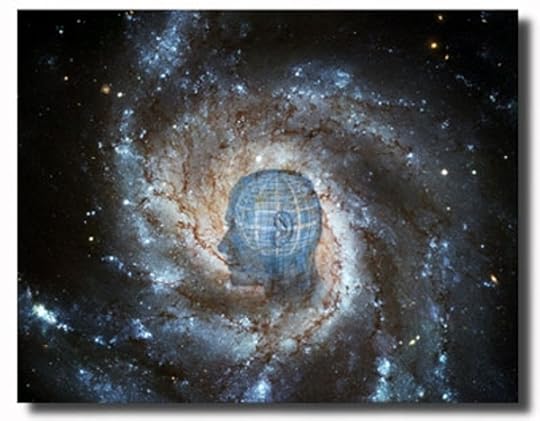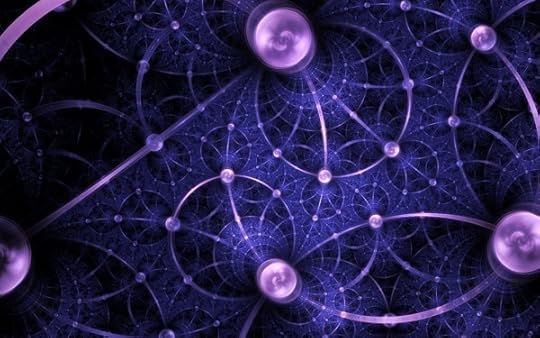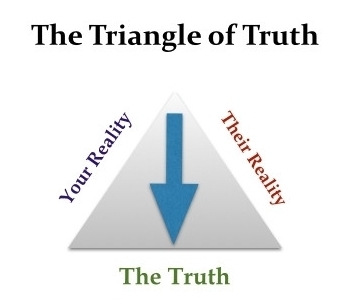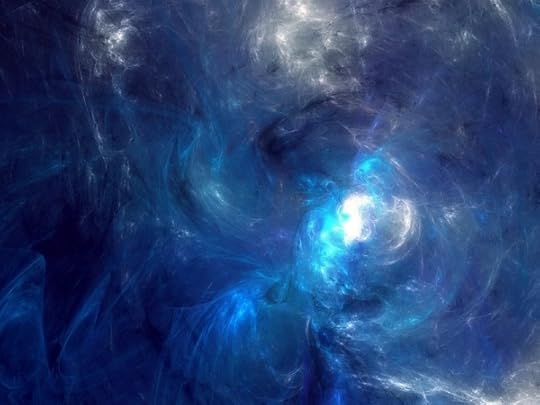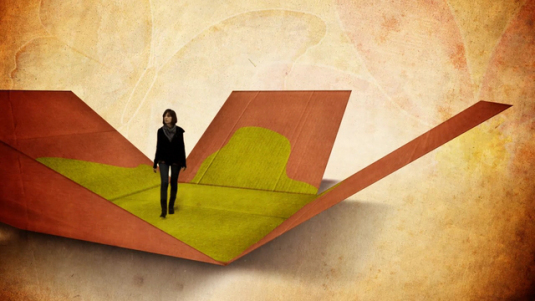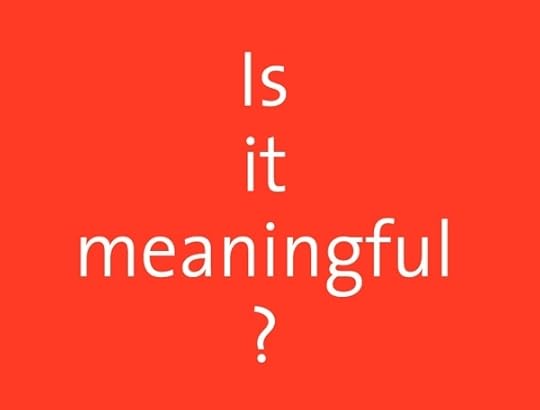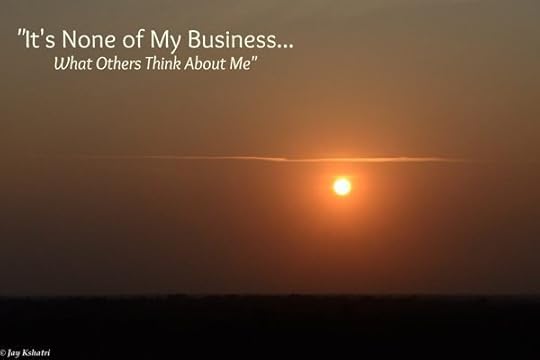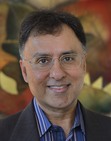Jay Kshatri's Blog, page 14
September 14, 2014
Did the German Soccer Team Use Unity Consciousness to Win the World Cup?
MIT professor and leadership expert, Otto Scharmer, commenting in the summer 2014 edition of The Intelligent Optimist, magazine speaks about how the Germans and Spanish have migrated to what he calls Soccer 4.0 , or total football:
“Yes. That’s called ‘total football’, invented by the Dutch in the 1970’s. This involves the total collapse of the idea that each individual has a specific role. There is no distinction between strikers and midfielders. Everyone is doing every thing. It requires a shared development and collective consciousness. Players no longer perceive the game with themselves as the center. There’s a sense of simply knowing where the open space is, where the opponent is, where the ball is. Everyone is attending to an ever-evolving situation and adjusting his own position relative to that. That’s what the best teams are doing such as Barcelona and the Spanish national team.” Mr. Scharmer goes on to suggest how this new way of organizing team performance could be applied to work in companies: “ Yes, all organizations can create places where this ‘sensing’ can develop. It simply requires practice, so that everyone is in synch. Once you get there, you’ll have much more flexibility to improvise and respond. I think that’s what great teams and great organizations pay a lot of attention to. It’s what we’re seeing now with Bayern Munich. Last year, Bayern Munich already had a great system, but it was imposed on each opponent. Now they’re much more adapting and evolving, switching their system twice a game. The players constantly evolve and respond as a team. They are really sensing what the situation requires them to do.”
Do It for the Team
A number of sports commentators have noted Germany’s unified team approach and how the future of soccer will move away from reliance on one or two major “stars” with supporting casts in favor of a unified and highly adaptive team approach. Otto Scharmer clearly sees this as an approach that companies should use in structuring their organizations. Of course, it’s not a new idea – start ups have been favoring this way of working for decades. Start ups, due to their limited size and scope rely on employees taking on multiple roles as needed to get the job done and working in alignment with organization versus individual objectives. Sure, everyone has a specific job description and responsibility, but start ups know that given the dynamic and fast moving nature of their environment (like sports), they cannot rely on the more rigid forms of organizational structure. One for All and All for One as they say…
WL Gore Keeps it Small, Collaborative, and Adpative
Achieving this in large corporations is more difficult to do by nature of their size and inherent sluggishness of command and control structures. Big companies have been trying to solve this dilemma for decades and with some success institute smaller teams within the larger structure who can be more adaptive and move faster. One company in particular that I know of, has taken an even more definitive step. American company WL Gore, the maker of Gore Tex fabrics and medical devices among other things, limits the size of its business units to 150 people. This is driven primarily by the understanding that above that number, people lose touch with each other which makes it harder to know people well and collaborate. They also maintain a flat hierarchy – no fancy titles, everyone is called an Associate. In other words, Gore wants people to have close relationships, collaborate, and to view everyone as an equal whose job is to achieve success for the team. (Gore has 10,000 employees, $3.2B in revenue, is very profitable, and interestingly is a private, not public, company). *To be fair, everything is not perfectly rosy in this scenario as some former employees at Gore have commented on lack of speed in decision making (with no strong authority centers, that can certainly be a problem). But overall, a very interesting approach to organizational structure and they are number 22 on Fortune’s top 100 companies to work for.
Mom and Dad Keep Roles Fluid
Of course, there is another organization that could benefit from this unity consciousness / adaptive response approach – Families. I have seen my wife and I using this fluid approach to getting things done around the house and for our children more and more over the years. With two teenagers and all of their commitments, and the seemingly 24/7 life of parents in our modern, always-on world, being able to shift and adapt roles and tasks as necessary to meet commitments I find unleashes a higher level of productivity, generates a more unified team oriented culture, and helps to keep everyone a bit more sane. Sometimes Mom is Dad and at times Dad plays Mom – keeps the kids guessing…
What If…
Could other organizations and institutions benefit from this Unity Consciousness approach? Hmmm, let me see… the U.S. Congress perhaps? Think of it – politicians coming together and dynamically adjusting their positions to be in alignment for the common good. The tricky part is the definition of the common good – it’s easy to define in sports – winning the game is the common good for the team. But in a society with vastly different view points, interest groups, and more, the common good is much more difficult to identify. Unless of course, you understood that there literally is no Us and Them and that helping all members of society achieve minimum levels of success, health, education, safety, nutrition, etc is the right thing to do. Why, because They are Us. All for One and One for All… Learn more about Unity Consciousness and see the scientific basis for why we are all One: Seeing the Oneness of our Reality
What the German World Cup Team example and others happening around the world every day, is that we are always evolving towards higher levels of integration and interconnectedness. When we are in alignment with that trend, things go well.
~Jay Kshatri
www.ThinkSmarrterWorld.com
The post Did the German Soccer Team Use Unity Consciousness to Win the World Cup? appeared first on Think Smarter World.
September 9, 2014
Seeing the Oneness of our Reality – Part Four
This is Part Four of a Five Part Series of Seeing the Oneness of our Reality. See previous installments: Part One, Part Two, Part Three.
In this five part series, we will explore the meaning of Oneness – the concept of one interconnected consciousness that gives rise to all beings and matter. There is no self and the other, they are one and the same. In my opinion, it is the understanding and experience of Oneness that is the key ingredient necessary for us to progress forward as individuals and for society to solve its biggest problems. Think about it, progress on any of the major issues we face – rising poverty, food and water shortages, climate change, rising energy prices, growing inequality, deteriorating education standards, immigration etc – are all stale-mated at the current time because we have become hyper-polarized as a society in terms of us versus them, what’s mine is not yours, and winning is everything. Yet, collectively, we have enormous technology, intellectual, and financial resources to solve or at least significantly mitigate almost any problem, if we would only cooperate. But if we think we are separate and different from “the other person or group”, that cooperation will be a long time in coming, if ever. In this five-part series, I’ll take you on a tour of what the latest information form the world of Science, Spirituality, and Psychology is revealing about our true reality. These things have been spoken about by ancient spiritual traditions for thousands of years, but our modern world took a detour around 400 years ago and is now finally catching up. Hopefully more will awaken to our underlying interconnected and shared reality and we can finally move forward to realize our true potential. -JK
Part Four
“Channeled” communication coming from
the Universal Consciousness or Source
Up until now, we’ve seen examples of a life beyond the physical from science, historic spiritual teachings, and recorded instances of past life regressions and near-death experiences. If we can communicate via our thoughts in this world and our souls are reborn and live forever, it would not be a stretch of the imagination for people to receive communication from the spirit world as well, would it? As we’ve mentioned earlier, the Universal Consciousness is broadcasting 24/7/365—and the reality is, some people choose to tune in and listen.
Artists, musicians, and other creative people over the years have spoken of “divine inspiration” guiding their work. Others have spoken about “guardian angels” guiding them at key moments in their lives. We also now have examples where someone has received sustained communication or dialogue from the Source, or God. Neale Donald Walsch’s Conversations with God series is a well-known example.
Neale himself likes to quote the old axiom:
“When the student is ready, the teacher will appear.”
In his first text, which appeared in 1995, Neale began a conversation with God. As in so many cases, upon reaching rock bottom, Neale was now ready to listen and started to ask questions of the Source. God provided answers through Neale to some of the key questions we all have regarding our existence. Over the next ten years, he published three volumes of these dialogues. A text is available that contains all three books—you won’t want to put it down once you start reading.
Another profound example can be seen in Rasha, a singer residing in the South East living a common suburban lifestyle and experiencing all of life’s ups and downs. In 1987 she started to receive a sustained stream of messages from the Source about the nature of existence and the problem of not seeing clearly the unified nature of our reality with our fellow beings. She had her first active dialogue in 1998 and describes that first communication in the introduction to her book, Oneness:
“What is Oneness?” I asked silently. “Are you God?” “As the drop of water is to the ocean—that is what Oneness is. The essence of the drop is every bit the essence of the totality. As you would understand God to be—yes, we are God.”
Rasha goes on to describe some of the early teachings she received:
…the teachings of Oneness began to lay the foundations for seeing everything in our present-day world from the timeless perspective of energy. Oneness explained that the vibrational momentum driving all Creation toward unity is the same momentum that people everywhere are experiencing in their daily lives … I came to understand the dynamics of how we manifest our reality, vibrationally, and how our emotional response mechanism sets up the parameters for drawing our life experiences to us.
Sound familiar? You have to hand it to the Source—he (or she) is quite consistent! But perhaps the most intriguing channeled communication has come to us from Jesus himself. A Course in Miracles is a text that was transcribed by Helen Schucman, a Professor of Medical Psychology at Columbia University’s College of Physicians and Surgeons, first published in 1976. Helen describes herself in the introduction:
Psychologist, educator, conservative in theory and atheistic in belief, I was working in a prestigious and highly academic setting … Three startling months preceded the actual writing, during which time Bill [her co-author and academic peer], suggested that I write down the highly symbolic dreams and descriptions of the strange images that were coming to me. Although I had grown more accustomed to the unexpected by that time, I was still very surprised when I wrote, “This is a course in miracles.” That was my introduction to the Voice. It made no sound, but seemed to be giving me a kind of rapid, inner dictation which I took down in a shorthand notebook. The course states that “universal theology is impossible, but a universal experience is not only possible but necessary.” Although Christian in statement, the Course deals with universal spiritual themes. It emphasizes that it is but one version of the universal curriculum. There are many others, this one differing from them only in form. They all lead to God in the end.
So what we have is Jesus choosing an academic atheist to be his vessel to clarify and amplify his thoughts on human existence that he believes we haven’t quite grasped yet. It’s a brilliant choice—an atheist (disallowing us to easily say this is a true believer trying to get the message out) and an academic psychologist, well versed in the ways of the mind and how to communicate thoughts effectively.
When you read A Course in Miracles, you will be struck by the similarity to the topics we’ve discussed in this section. Let’s take a look at some of the teachings to illustrate the point:
The world we see merely reflects our own internal frame of reference—the dominant ideas, wishes, and emotions
in our minds.
Perception is a function of the body, and therefore represents a limit on awareness. Perception sees through the body’s eyes and hears through the body’s ears. It evokes the limited responses that the body makes. The body appears to be largely self-motivated and independent, yet it actually responds only to the intentions of the mind. If the mind wants to use it for attack (against fellow beings), it becomes prey to sickness, age, and decay.
The opposite of seeing through the body’s eyes is the vision of Christ, which reflects strength rather than weakness, unity rather than separation, and love rather than fear. The opposite of hearing through the body’s ears is communication through the Voice for God, the Holy Spirit ( The Field ), which abides in each of us. His voice seems distant and difficult to hear because the ego, which speaks for the little, separated self, seems to be much louder. (Duality between the Self and the Universal Consciousness )
Sin is defined as “lack of love.” Since love is all there is, sin in the sight of the Holy Spirit is a mistake to be corrected, rather than an evil to be punished.
Miracles are thoughts. Thoughts can represent the lower or bodily level of experience, or the higher or spiritual level of experience. One makes the physical, and the other creates the spiritual. ( Our thoughts create the world .)
If you’ve ever had some reservations about traditional Christian theology as it relates to what your life experience has been or are more attracted to recent teachings of the historical Jesus, give A Course in Miracles a try. Throughout the text, Jesus as channeled through Helen Schucman, attempts to clarify and correct aspects of Biblical teachings that may have been misunderstood—and to unveil teachings that were his original intent. (As an example, the belief in reincarnation was originally part of Christian doctrine. Roman Emperor Justinian had it removed from church doctrine in 553 A.D. in order to better control his subjects.)
Walter Semkiw, author of Born Again, has catalogued some of the beliefs that existed prior to that removal and found that a number of Christian Church Fathers believed in and wrote about reincarnation:
St. Justin Martyr (100–165 A.D.) expressly stated that the soul inhabits more than one human body.
Origen (185–254 A.D.), who was considered by St. Jerome as “the greatest teacher of the Church after the Apostles,” defended the idea that the soul exists before the body, fundamental to the concept of reincarnation.
Another Church Father, St. Gregory, Bishop of Nyssa (257–332 A.D.), wrote: “It is absolutely necessary that the soul should be healed and purified, and if this does not take place during its life on earth, it must be accomplished in future lives … The soul … is immaterial and invisible in nature, it at one time puts off one body … and exchanges it for a second.”
St. Gregory also wrote: “Every soul comes into this world strengthened by the victories or weakened by the defeats of its previous life.”
St. Augustine (354–430 A.D.), one of the greatest theologians of the Christian church, speculated that philosopher Plotinus was the reincarnation of Plato. St. Augustine wrote: “The message of Plato … now shines forth mainly in Plotinus, a Platonist so like his master that one would think … that Plato is born again in Plotinus.”
Walter summarizes his research by saying:
In sum, reincarnation has appeared in Christian church doctrine, but reincarnation has been suppressed in the contemporary Church’s philosophy. One reason is that if reincarnation is acknowledged and research demonstrates that souls can change religion from one incarnation to another, a religion’s claim to exclusive truth is negated. Still, evidence of reincarnation can help fulfill one of Christianity’s greatest doctrines, that we are indeed brothers and sisters, and that we should love one another as such.
You may also want to take a look at Marianne Williamson’s book, A Return to Love, Reflections on the Principles of a Course in Miracles. Marianne has become a well-known teacher of A Course in Miracles, and her book is a great user-friendly introduction to the principles in the text.
~Jay Kshatri
The post Seeing the Oneness of our Reality – Part Four appeared first on Think Smarter World.
September 3, 2014
Seeing the Oneness of our Reality – Part Three
This is Part Three of a Five Part Series of Seeing the Oneness of our Reality. See previous installments: Part One, Part Two.
In this five part series, we will explore the meaning of Oneness – the concept of one interconnected consciousness that gives rise to all beings and matter. There is no self and the other, they are one and the same. In my opinion, it is the understanding and experience of Oneness that is the key ingredient necessary for us to progress forward as individuals and for society to solve its biggest problems. Think about it, progress on any of the major issues we face – rising poverty, food and water shortages, climate change, rising energy prices, growing inequality, deteriorating education standards, immigration etc – are all stale-mated at the current time because we have become hyper-polarized as a society in terms of us versus them, what’s mine is not yours, and winning is everything. Yet, collectively, we have enormous technology, intellectual, and financial resources to solve or at least significantly mitigate almost any problem, if we would only cooperate. But if we think we are separate and different from “the other person or group”, that cooperation will be a long time in coming, if ever. In this five-part series, I’ll take you on a tour of what the latest information form the world of Science, Spirituality, and Psychology is revealing about our true reality. These things have been spoken about by ancient spiritual traditions for thousands of years, but our modern world took a detour around 400 years ago and is now finally catching up. Hopefully more will awaken to our underlying interconnected and shared reality and we can finally move forward to realize our true potential. -JK
Part Three
Spirituality, Mysticism, and Philosophy
The Hindus 5,000 years ago taught in their religious texts that the world was an illusion, a dream spun by Brahman, God, or the universal con-sciousness. The Hindus call the one consciousness Atman and Christians call it the Holy Spirit. The Holy Spirit is said to connect all humankind to each other and to God. Sounds like The Field doesn’t it? Author Gregg Braden, in The Divine Matrix, describes how the Rig Veda—a 7,000-year-old Hindu text—speaks of a power or field that underlies all creation:
In what’s perhaps the the best-known text, the Rig Veda, there’s a description of a force that underlies creation from which all things are formed—the force that was there before the “beginning.” The power, named Brahman, is identified as the “unborn” … in whom all existing things abide. Further in the text it becomes clear that all things exist because “the One manifests as the many, formless putting on forms.”
What this passage points to is how the ancient Indians saw that Universal Consciousness—The One or God—was one unifying essence that resided in all beings and things (the many). Quantum physics is showing the same connection—a field of possibilities and inter-connections. In a similar vein, Chinese master Lao Tzu around 600 BCE wrote in the Tao Te Ching: “The Tao is called the Great Mother: empty yet inexhaustible, it gives birth to infinite worlds. It is always present within you. You can use it any way you want.” The mystical traditions point out the oneness that connects all things. Fritjof Capra in his groundbreaking book The Tao of Physics put it beautifully:
In contrast to the mechanistic Western view, the Eastern view of the world is “organic.” For the Eastern mystic, all things and events perceived by the senses are interrelated, connected, and are but different aspects or manifestations of the same ultimate reality. Our tendency to divide the perceived world into individual and separate things and to experience ourselves as isolated egos in this world is seen as an illusion which comes from our measuring and categorizing mentality. It is called avidya, or ignorance, in Buddhist philosophy and is seen as the state of a disturbed mind which has to be overcome.
The Buddha summarized his philosophy on why our minds get disturbed—or in his words, why we suffer—in The Four Noble Truths:
The Existence of Suffering – The ever-present human condition, due to the mind’s constant processing of sensory data.
The Origin of Suffering – The pain we feel when we experience change (changes in our physical or emotional state, or anything that our senses pick up and which leads to thoughts that reflect a change in circumstances).
The Cessation of Suffering – Our ability to accept (to control our thoughts) that all change is constant and dynamic and that once we release ourselves from attachment to what is changing, we achieve liberation.
The Path to Cessation of Suffering – The Noble Eightfold Path, which begins with understanding and internalizing the first three Noble Truths and then progressing through a series of ways of being in our lives that ultimately leads to Enlightenment.
The Noble Eightfold path is:
Right Understanding
Right Thought
Right Speech
Right Action
Right Livelihood
Right Effort
Right Mindfulness
Right Concentration
Of course the Buddha said much more about how to live our lives. One example in particular shows that he alerted us to what is now (2,500 years later) being witnessed by quantum physicists. The Buddha in the original Pali Canon spoke about the concept of Interdependent Origination (from Samyutta Nikaya):
When there is this, there is that. When there is not this, there is not that. From the arising of this, that arises. From the ceasing of this, that ceases.
The Buddha was essentially saying that nothing is permanent or absolute. Specifically, no beings or phenomena exist independently of other beings and phenomena and all beings and phenomena are caused to exist by other beings and phenomena. Moreover, beings and phenomena perpetually arise and perpetually cease because other things and beings perpetually arise and perpetually cease. Nothing Is Permanent. In quantum physics, it is believed that at the subatomic level, matter does not exist as a firm, permanent, unchanging structure. Rather, as Fritjof Capra explained in The Tao of Physics, it has a “tendency to exist” based on probabilities:
At the subatomic level, matter does not exist with certainty at definite places, but rather shows “tendencies to exist,” and atomic events do not occur with certainty at definite times and in definite ways but rather show “tendencies to occur.” … At the subatomic level, the solid material objects of classical physics dissolve into wave-like patterns of probabilities, and these patterns ultimately do not represent probabilities of things but rather probabilities of interconnections … As we penetrate into matter, nature does not show us any isolated “basic building blocks” but rather appears as a complicated web of relations between the various parts of the whole. These relations always include the observer in an essential way. The human observer constitutes the final link in the chain of observational processes, and the properties of any atomic object can only be understood in terms of the object’s interaction with the observer.
Sounds like a 21st century scientific description of Interdependent Origination does it not? Our world is highly interconnected; it’s not static, but rather it’s energy flowing and we (the observer) manifest (the way we affect probabilities) things into being by our thoughts and emotions. Welcome to the future.
Past Life Regression
Past Life Regression is essentially about the concept of Reincarnation. Through hypnosis, a trained psychologist is able to lead some people (not all can be successfully hypnotized) back in time through their memories to remember details of lives they have lived in the past. Now, if you’ve been raised in a tradition that believes there’s something inherently sacrilegious about this belief, you likely don’t know that a number of Christian Church Fathers believed in and wrote about reincarnation (I discuss this further in part four). There’s actually a great deal of evidence to prove that there’s nothing unholy or irreverent about this phenomenon; in fact, quite the opposite is true. The various psychiatrists who have conducted thousands of regressions in controlled settings with all details recorded—and in some cases videotaped—can attest that reincarnation exists. Dr. Brian Weiss, the former chairman of the Psychiatry department at Mt. Sinai Medical Center and a Columbia University and Yale Medical School graduate, is the most prominent of the psychiatrists working in this field. Weiss regressed his first patient in 1980 and says he has regressed over 4,000 patients since then.
To illustrate a profound example, Dr. Weiss tried helping his first patient, Catherine, overcome traumas in her life with conventional psychiatric treatment. When those failed, he decided to use hypnosis. He has explained that hypnosis is just a way to bring someone into a hyper-focused state of mind. The person’s body relaxes, and their concentration level is enhanced. This allows them to remember traumas that have occurred in their lives previously. When he first set out, Dr. Weiss was just expecting to hear about distress that had occurred in Catherine’s childhood (in her present life). However, once into the session, she started to recount details about herself, people, and places that had taken place hundreds of years ago. Catherine described her former names, details of where she lived, how she lived and died, and more. Weiss later verified that the details she related were historically accurate and Catherine herself confirmed that she did not know of these details in her present life, nor had she been to any of the locations.
This first session was very dramatic for Dr. Weiss, but he was still a bit uncertain about what he was witnessing. That is until Catherine spoke of something under hypnosis that eliminated all doubt of the existence of an afterlife for him. He says that during their session, his office suddenly became icy cold. She said, “There are two people here to see you: your father and your son.” Dr. Weiss recounts that this was surprising as she did not know any background details about his life—he didn’t even have diplomas hanging in his office. In addition, this occurred at a time before the Internet when it was not easy to look up details about an individual. Catherine proceeded to tell him facts she couldn’t have known:
Your father is here, and your son, who is a small child. Your father says you will know him because his name is Avrom, and your daughter is named after him. Also, his death was due to his heart. Your son’s heart was also important, for it was backward, like a chicken’s. He made a great sacrifice for you out of his love. His soul is very advanced … His death satisfied his parent’s debts. Also he wanted to show you that medicine could only go so far, that its scope is very limited.
All this stunned Dr. Weiss deeply. There was no way Catherine could know any of this information. His newborn son, Adam, had in fact died of an extremely rare congenital heart defect merely a couple of weeks after his birth. Only a few people close to the family knew of Adam’s condition and death. It also turns out, at around the time of Adam’s death, Weiss was deciding whether to stay on his chosen path of psychiatry or accept a residency in internal medicine. Adam’s death frustrated Weiss by highlighting for him the limits of modern medicine; hence he firmed up his decision to stay focused on psychiatry. Thus what Catherine told him was all the proof he needed of life after death. The sessions with Catherine also unearthed an additional revelation.
Catherine started to channel the thoughts and messages of beings called “Masters”—highly evolved souls who are currently not incarnated into human form (in fact Catherine told him that it was the Masters who told him the details about Weiss’ life). Through his dialogues with Catherine and many other patients, Weiss has been able to ask further questions of the Masters about many different aspects concerning, life, death, reincarnation, how lives are chosen, the purpose of our lives on earth, how our progress as souls is judged, what it’s like in the spirit world, the existence of other civilizations, and much more. Insightful Indian journalist Subhamoy Das has done an excellent job of summarizing in a book review some of the communication from the Masters showcased in Dr. Weiss’ first book, Many Lives, Many Masters:
“Our task is to learn, to become God-like through knowledge … By knowledge we approach God, and then we can rest. Then we come back to teach and help others.”
“There are many gods, for God is in each of us.”
We have to be on “different planes at different times. Each one is a level of higher consciousness. What plane we go to depends upon how far we’ve progressed …”
“We must share our knowledge with other people. We all have abilities far beyond what we use … you should check your vices … if you do not, you carry them over with you to another life … when you decide you are strong enough to master the external problems, then you will no longer have them in your next life.”
“Everybody’s path is basically the same. We all must learn certain attitudes while we’re in physical state … charity, hope, faith, love … we must all know these things and know them well.”
“Everything is energy … Humans can only see the outside, but you can go much deeper … To be in physical state is abnormal. When you are in spiritual state, that is natural to you. When we are sent back, it’s like being sent back to something we do not know. In the spirit world you have to wait, and then you are renewed. It’s a dimension like the other dimensions …”
“The fear of death … that no amount of money or power can neutralize”… remains within us. “But if people knew that life is endless, so we never die, we were never really born, this fear would dissolve.” We have “lived countless times before and would live countless times again … and spirits are around us to help while in physical state and after death, in spiritual state.” We and our deceased loved ones would join these guardian angels.
“Acts of violence and injustices against people do not go un-noted, but is repaid in kind in another lifetime.”
“Everything comes when it must come. A life cannot be rushed … we must accept what comes to us at a given time … life is endless … we just pass through different phases. There is no end. Time is not as we see time, but rather in lessons that are learned.”
After death “we get to the spiritual plane, we keep growing there, too. When we arrive, we’re burned out. We have to go through a renewal stage, a learning stage, and a stage of decision. We decide when we want to return, where, and for what reasons … Our body is just a vehicle for us while we’re here. It is our soul and our spirit that last forever …”
There are many other psychiatrists working in the past life regression field, but if you haven’t looked into this area for yourself, start with Dr. Weiss’ Many Lives, Many Masters. Trust me, it will alter your outlook on life. The main takeaway on past life regression is that the detailed accounts of past lives that people provide are very compelling. They are able to provide vivid details of events, places, and people they could not possibly know about in their current lives. In some cases people have even started to speak in ancient languages—perfectly. What are they tapping into?
Clearly, if our universe and existence were based purely on classical physics, these phenomena could not exist. For people to connect to these memories, they are either tapping into their soul and those memories are residing within them, or they are tapping into The Field at large—or Universal Consciousness—and bringing back details from there. Either way, it is consistent with the energy matrix that we’ve spoken about earlier in this chapter and demonstrates that there’s a connected web we’re part of and that our minds are the key drivers of our existence. The messages from the Masters also show us that what various spiritual traditions have spoken about for centuries is consistent—that we are spiritual beings having a physical experience.
And that ultimately, we are here to experience and learn Oneness, that we are all one and the same and connected to each other and the Universal Consciousness, or God. We express that understanding through compassion, forgiveness, and love for our fellow beings, and when we attain that understanding, we achieve Nirvana and the release of having to be reborn. This takes hundreds of lifetimes to achieve. When we don’t achieve that understanding, we suffer karmic consequences (either short term or long term in this life, or carried into successive lives). What we inflict on others is reflected back to us so that we may gain insight in order to change our thoughts, actions, and emotions. We are free to choose how we act and think at all times, and as such—just as quantum physics shows—we create our reality through those thoughts. If we keep our minds focused on love, compassion, and forgiveness, we attract those things back into our lives. E=MC2—thoughts are converted into our physical reality.
Near-Death Experiences
There are thousands of cases of near-death experiences that have been recorded over the years. You no doubt have read or heard about at least one, which is often an out-of-body experience where the person is floating above the operating room table where their body is lying. They’re able to describe minute details of transpiring events that they should not have been able to do since they were clinically dead. Other accounts report how the person travels through a “chute of light” and arrives into a peaceful spiritual environment. In some of these cases, the person describes being reunited with previously deceased family members, and perhaps other major figures from their life.
For some people, these accounts are enough to convince them of the fact of our spiritual existence. But for others, especially doctors and neuroscientists, there’s a belief that these experiences are just hallucinations of the brain during traumatic events. So taken alone, NDEs have not been able to provide “conclusive” proof of the existence of God, or Universal Consciousness, or the non-physical reality of the Universe. But in 2012, we were presented with the near-death experience of Dr. Eben Alexander, a neurosurgeon who has practiced at Harvard University and Massachusetts General Hospital. Dr. Alexander has conducted extensive neuro-research and worked in the areas of stereotactic radiosurgery (laser-guided radiation to specific parts of the brain). He has also helped in developing MRI procedures targeting neurosurgical procedures. In addition, he has co-authored over 150 papers and peer reviewed chapters for medical journals. It’s important here to note that before his near-death experience, like many of his neuroscientist peers, he did not believe in the validity of NDEs and their implication of a spiritual afterlife. In Proof of Heaven, he writes:
I’d heard many stories over the years of people who had strange experiences, usually after suffering cardiac arrest: stories of traveling to mysterious, wonderful landscapes; of talking to dead relatives—even of meeting God Himself. Wonderful stuff, no question. But all of it, in my opinion, was pure fantasy. What caused the otherworldly types of experience that such people so often report? I didn’t claim to know, but I did know that they were brain-based. All of consciousness is. If you don’t have a working brain, you can’t be conscious … Or, so I would have told you before my own brain crashed.
Eben Alexander’s fateful day occurred on November 10, 2008 (at age 54). He developed a severe case of bacterial meningitis in the brain, was in a coma for seven days, and his entire neocortex (outer part of the brain), was nonfunctional. Dr. Alexander comments in his book that in certain cases, such as cardiac arrest, the person’s neocortex is deactivated temporarily but is not fully shut down or overly damaged. The person may still be getting enough blood flow after being revived in time. But in Eben’s case, his neocortex was completely shut down, so it becomes difficult to explain how he could have consciously known what was going on or what he was experiencing through his brain—because it wasn’t functional, he simply could not have had that awareness accordingly to physiology. His fellow neurosurgeons who were working on him on the operating table confirmed it.
Dr. Alexander’s NDE experience and what happened to him was therefore not a brain-based hallucination, but something else. His consciousness was not tied to his body or brain; it was separate. This is a classic case of Soul as Spirit. During Dr. Alexander’s NDE experience, he recounts how he traveled into a place of extreme beauty and vivid colors. He was met by a beautiful girl he didn’t know, and she traveled with him and told him that he would learn many things during his time in the spirit world, but that he would not stay—he would return to his physical existence. Later, Eben didn’t understand why someone from his family wasn’t there to meet him and act as his guide. The young woman was very nice to him, and radiated a tremendous soothing influence on him, but he had no idea who she was. It turned out that Dr. Alexander, who was adopted at birth, had three siblings from his biological family, all of whom he had never met. There were two sisters and a brother, and he ended up meeting the family only a few months before he fell into the coma. While the reunion was joyful, one of the sisters wasn’t present—she had died ten years earlier.
Once he was out of the coma and had fully recounted and recorded his NDE, the fact that he hadn’t been greeted by a relative introduced a bit of doubt in himself about his NDE. A few months after his brush with death, his biological family sent him a picture of his deceased sister. As Dr. Alexander studied the photo, everything fell into place. The woman in the photo was the same woman who escorted him through the spirit world. He in fact had been met by a family member—he just didn’t know it at the time. As part of his journey, Dr. Alexander says he was taken to meet with God, the Source itself. He describes entering “an immense void, completely dark, infinite in size, yet also infinitely comforting.” All the messages were transmitted to him telepathically, via thoughts. He describes learning and absorbing knowledge deeper and more quickly than anything we humans are capable of. The physical nature of our brains slows down our ability to process information, but in a spiritual state, we operate at the speed of thought, which is much faster.
Eben says it will take him a long time to fully comprehend what he was taught, but it seemed to boil down to one thing—Love. Love is without a doubt, the basis of everything. Not some abstract, hard-to-fathom kind of love, but the day-to-day kind that everyone knows—the kind of love we feel when we look at our spouse and our children, or even our animals. In its purest and most powerful form, this love is not jealous or selfish, but unconditional. This is the reality of realities, the incomprehensible glorious truth of truths that lives and breathes at the core of everything that exists or that ever will exist, and no remotely accurate understanding of who and what we are can be achieved by anyone who does not know it, and embody it in all of their actions. Dr. Alexander goes on to acknowledge how difficult it is for us in our human form to live out this eternal truth. To love everyone on a daily basis as if they were our own family, that they were in fact us.
The brain—in particular its left-side linguistic/logical part, that which generates our sense of rationality and the feeling of being a sharply defined ego or self—is a barrier to our higher knowledge and experience. It is my belief that we are now facing a crucial time in our existence. We need to recover more of that larger knowledge while living here on earth, while our brains (including its left-side analytical parts) are fully functioning. Science—the science to which I’ve devoted so much of my life—doesn’t contradict what I learned up there … The unconditional love and acceptance that I experienced on my journey is the single most important discovery I have ever made, or will ever make … I also know in my heart that sharing this very basic message—one so simple that most children readily accept it—is the most important task that I have.
Yes, we can choose to doubt even Dr. Alexander’s near-death experience as credible “Proof of Heaven.” He in fact, prior to his NDE, was a rational scientist—dedicated to the materialist worldview—who did not acknowledge the existence of a non-materialist spiritual realm. Looking at it as an isolated case, we can chalk it up to mistaken remembrances of what actually happened, or that his neocortex really wasn’t completely shut down, or that the medication he was on affected him in some way. But looking at it in the context of yet another slice of information pointing to the existence of a soul, of reincarnation, of an energy matrix along with the other things we have already discussed, how can we not at least give pause? It appears quite compelling how the common intersection from all these phenomena—which come from completely different areas of our existence and from various people—point to the same revelation of our reality as spiritual beings having a physical existence. And as spiritual beings, our goal in life is to see past the ego’s mistaken insistence of a separation between all of us and all things. When we accept this view, we cannot look at the world the same way again, and we must alter our thinking to be in line with our true reality.
~Jay Kshatri
The post Seeing the Oneness of our Reality – Part Three appeared first on Think Smarter World.
August 21, 2014
Seeing the Oneness of our Reality – Part Two
This is Part Two of a Five Part Series of Seeing the Oneness of our Reality. See Part One here.
In this five part series, we will explore the meaning of Oneness – the concept of one interconnected consciousness that gives rise to all beings and matter. There is no self and the other, they are one and the same. In my opinion, it is the understanding and experience of Oneness that is the key ingredient necessary for us to progress forward as individuals and for society to solve its biggest problems. Think about it, progress on any of the major issues we face – rising poverty, food and water shortages, climate change, rising energy prices, growing inequality, deteriorating education standards, immigration etc – are all stale-mated at the current time because we have become hyper-polarized as a society in terms of us versus them, what’s mine is not yours, and winning is everything. Yet, collectively, we have enormous technology, intellectual, and financial resources to solve or at least significantly mitigate almost any problem, if we would only cooperate. But if we think we are separate and different from “the other person or group”, that cooperation will be a long time in coming, if ever.
In this five-part series, I’ll take you on a tour of what the latest information form the world of Science, Spirituality, and Psychology is revealing about our true reality. These things have been spoken about by ancient spiritual traditions for thousands of years, but our modern world took a detour around 400 years ago and is now finally catching up. Hopefully more will awaken to our underlying interconnected and shared reality and we can finally move forward to realize our true potential. -JK
Part Two:
Science
The origins of quantum mechanics theory date back to between 1924 and 1941. Some of the major quantum effects that were discovered are summarized by a leading quantum physicist, Amit Goswami, in his book The Self-Aware Universe, How Consciousness Creates the Material World:
A quantum object (an electron, for example) can be in more than one place at the same time (the wave property).
A quantum object cannot be said to manifest in ordinary space-time reality until we observe it as a particle (collapse of the wave).
A quantum object ceases to exist here and simultaneously appears in existence over there; we cannot say it went through the intervening space (the quantum jump).
A manifestation of one quantum object, caused by our observation, simultaneously influences its correlated twin object, no matter how far apart they are (quantum action at a distance).
These quantum effects of course contradict the Scientific Materialism view that we’ve lived with since the days of Newton—that essentially everything is composed of discrete particles of matter and nothing else. Furthermore, they are at odds with the associated physical laws of how that matter interacts with and affects other matter—the Laws of Motion, Gravity, and the Speed of Light—known as Classical Mechanics (the physics of dealing with motion of matter). These laws make it possible to predict the exact position, momentum, energy, velocity, and other properties of an entity at any point in time once its initial state and the forces acting upon it are known. In classical mechanics or Newtonian physics, if objects are separate physically, then they can assume to have no effect on each other and are in no way connected.
Quantum physics, however, shows us that this is not true. Specifically, at the subatomic level, electrons are sometimes particles and other times waves of energy, not merely discrete particles of matter. Electrons in fact change state into particles (matter) from waves (energy) once we observe them (the Observer Effect). This is what Einstein pointed out in his E=MC2 formula: energy equals matter multiplied by the speed of light squared. Energy converts to matter and vice versa. This naturally poses a dilemma for the modern scientist. The idea that our reality is unlike what Newtonian physics stated for over 400 years—that the world is not in fact discrete matter but rather energy potential that comes into our being through consciousness—is of course a difficult paradigm shift to absorb. In fact, as Lynn McTaggart wrote in The Field, the implication for our lives is breathtaking:
This astounding observation (the observer effect) also had shattering implications about the nature of reality. It suggested that the consciousness of the observer brought the observed object into being. Nothing in the universe existed as actual “thing” independently of our perception of it. Every minute of every day we were creating our world.
To be fair, we know that in most cases, we can comfortably use Newtonian mechanics to understand our material world. But in certain instances, those laws don’t seem to hold. McTaggart adds:
Today we know that Newtonian model is valid only for objects consisting of large numbers of atoms, and only for velocities which are small compared to the speed of light. When the first condition is not given, classical mechanics has to be replaced by quantum theory; when the second condition is not satisfied, relativity theory has to be applied.
So Newtonian Physics is not wrong; rather, quantum physics is more accurate in its description of our true reality. The question is: Are we ready on a broad scale to accept that message and change the way we approach our lives? Major scientific minds have been trying to tell us these truths for some time. In fact, Max Planck, the physicist who upon winning the Nobel Prize for his work on the atom, said:
As a man who devoted his whole life to the most clear-headed science, to the study of matter, I can tell you as the result of my research about atoms this much: There is no matter as such! All matter originates and exists only by virtue of a force which brings the particles of an atom to vibration and holds this most minute solar system of the atom together … We must assume behind this force the existence of a conscious and intelligent mind. This mind is the matrix of all matter.
The time for us to listen has come. We are connected. We’re not unrelated bits of matter rolling around like billiard balls on a giant pool table. But it’s not only physics that is challenging our existing frameworks of how the world works. The biological sciences are also starting to challenge the existing beliefs that our genetic code solely controls our health. Certain biologists, such as Dr. Bruce Lipton, are providing proof of a mind-body connection, that our thoughts in fact affect the functioning of our bodies and that our environment is also playing a major role in the functioning of our bodies. Lipton and others show us that we can even turn certain genes on or off through environmental factors (diet, stress levels, thoughts). In his The Biology of Belief, Professor Lipton points to a ground-breaking paper published in 1990 by H.F. Nijhout titled “Metaphors and the Role of Genes and Development.”
Nijhout presents evidence that the notion that genes control biology has been so frequently repeated for such a long period of time that scientists have forgotten it is a hypothesis, not a truth. In reality, the idea that genes control biology is a supposition, which has never been proven, and in fact, has been undermined by the latest scientific research … Nijhout summarizes the truth: “When a gene product is needed, a signal from the environment, not an emergent property of the gene itself, activates expression of that gene.”
Beyond physical influencers in our environment, scientists have started to recognize that if quantum physics is right that we and our world are constructed of energy, then other energy sources would naturally have an effect on us, good and bad. In The Biology of Belief, Lipton further tells us:
Hundreds upon hundreds of other scientific studies over the last fifty years have consistently revealed that “invisible forces” of the electromagnetic spectrum profoundly impact every facet of biological regulation. These energies include microwaves, radio frequencies, the visible light spectrum, extremely low frequencies, acoustic frequen-cies, and even a newly recognized form of force known as scalar energy. Specific frequencies and patterns of electromagnetic radiation regulate DNA, RNA, and protein syntheses; alter protein shape and function; and control gene regulation, cell division, cell differen-tiation, morphogenesis (the process by which cells assemble into organs and tissues), hormone secretion, and nerve growth and function. Each one of these cellular activities is a fundamental behavior that contributes to the unfolding of life. Though these research studies have been published in some of the most respected mainstream biomedical journals, their revolutionary findings have not been incorporated into the medical school curriculum. (Liboff 2004; Goodman and Blank 2002; Sivitz 2000; Jin, et al, 2000; Blackman, et al, 1993; Rosen 1992, Blank 1992; Tsong 1989; Yen-Patton, et al, 1988)
It’s no coincidence that our societal rates of cancer and other diseases have gone up steadily and in tandem with the increase in electrical and electromagnetic energy surrounding us day and night—cellular signals, Wi-Fi signals, microwaves, bluetooth signals, and other transmissions from the cornucopia of appliances in our modern lifestyles. Most of you are likely aware of the concern/controversy about cell phones causing brain tumors. Initially, most research scientists dismissed the concerns and stated that there was no evidence supporting the link between cellular radio frequency transmissions and brain tumors or other cancer. Well, fast forward and the picture has changed. Now the recommendation is to use a wired headset and keep the phone away from your person as much as possible. Of course, if the cell signal (any form of RF—radio frequency) is a problem, what about other RF or high-energy signals like Wi-Fi, Bluetooth, etc?
What’s more, stress—a form of internally generated “fear” and “harmful energy”—has escalated to great heights. Many of us are in constant fight-or-flight modes for long periods of our waking hours. Is it just a coincidence that our cells and overall health are being affected by increases in destructive energy from internal and external sources? Not according to the leading edge of scientific research, taken from Emotional Balance by Dr. Roy Martina:
Every Thought Is Translated into Biochemical Language: Research done by neurobiologist Candace Pert shows that emotionally-charged thoughts and memories cause the body to manufacture different neuropeptides (small protein-like molecules used by neurons to communicate with each other). Researchers at the Institute of Heart Math (Boulder, Colorado) found that positive emotions raise the body’s levels of DHEA (a hormone that rejuvenates and fights stress) and IgA (an immune-protein), while negative emotions lower both. The neuropeptides have an effect not only on the brain but on all organs, glands, cells and tissues. Every thought we think and every emotion we feel is communicated to every cell in our bodies. Furthermore, the organs can store emotional information, too. This is becoming ever more evident now that organ transplants are more and more common … Paul Pearsall’s book The Heart’s Code describes 73 cases of “memory transplants” coinciding with heart transplants. In one case a murder was solved as a result of a transplanted memory. One elderly woman started to crave the same foods her donor had; another started speaking words from a language that had been the donor’s native tongue. The list suggests that cells communicate electromagnetically, and that memory can be stored in every cell.
Using Mind-Body techniques to change the health of our cells and heal disease (and to proactively stay healthy) is a topic not generally embraced by the medical establishment at large. There are certainly some physicians (like Dr. Martina) who have championed it, but it is catching on very slowly. The doctors who are starting to use mind-body healing techniques (meditation, positive visualization, stress management through yoga and breathing exercises, etc.) do so in conjunction with traditional medical/pharmaceutical approaches. It certainly makes sense to use the best of both worlds, but if we can use fewer toxic approaches to our health (just look at all the possible side effects of your typical pharmaceutical drug), would that not be to our advantage?
Dr. Jon Kabat-Zinn, Professor of Medicine Emeritus and founding director of the Stress Reduction Clinic and the Center for Mindfulness at the University of Massachusetts Medical School sums up this new approach to overall health in a conversation with Stephen Rechtschaffen, cofounder of the Omega Institute, in an excerpt from Mindfulness Magazine:
Too much of the education system orients students toward becoming better thinkers, but there is almost no focus on our capacity to pay attention and cultivate awareness. We can learn to bring together the body’s various systems to fine-tune the body and mind, so we can navigate life’s ups and downs in a way that minimizes stress and maximizes well being.
Taking a pill is easy, but as Systems Thinking teaches us, a complex system can have many different outputs depending upon its inputs. The human body is the most complex system known and there are variations from person to person (that’s why personalized medicine is such an important topic). When we input a potent drug into the body to address a specific issue, we may end up altering other elements of the system and producing unwanted effects.
Our scientists and doctors try hard to understand these possible reactions and outcomes and manage them, but we of course never know for sure what changes we may be introducing into the system. That’s why there is such a long list of disclaimers for each pharmaceutical drug. Please understand I’m not advocating here that you stop taking a prescribed medication; however, I do encourage you to consider investigating a more holistic approach to your health and well-being and to discuss with your physician how you can implement that plan together.
Though I’ve presented several powerful concepts in this section thus far, the key conclusions from physics and biology are that our thoughts have an effect on everything in our environment, including our bodies. Case in point: Think carefully. There has been an enormous amount of scientific investigation into quantum effects over the last eighty years. Some of the main postulates weren’t able to be proven until our scientific equipment and capability advanced enough to carry out the experiments. More is yet to come, but to get us started, I’ve compiled a table of the various scientific experiments (this is a small sample) that have validated the existence of non-local communication and other quantum effects that point to a Universal Consciousness:
YearDiscovery / Experiment / PaperScientist(s)
1687Principia Mathematica. Establishes Classical Physics, which accurately describes our material world.Isaac Newton
1873Discovery of Electromagnetism. The existence of an energy field that up until that time was not known by Newtonian Physics.James Clerk Maxwell
1900Paper on Quantum Theory. Planck stated that energy, which appears to be emitted in wavelengths, is actually discharged in small packets (quanta).Max Planck
1905Theory of Relativity.
Whereas Newtonian Physics considers certain measurements such as mass and width to be constants, the only constant in relativity is the speed of light. Width, time, and mass all depend on the velocity of one observer relative to another. Therefore, anything moving relative to anything else will actually be in a different time frame (when approaching the speed of light). Albert Einstein
1970String Theory.
Postulates that subatomic particles are tiny vibrating bits of energy, called strings. These strings are said to “vibrate” at different rates. These “notes” or vibrational frequencies are what give rise to the different properties of quarks and atoms. Vibrations are similar to the notes on a guitar.Werner Heisenberg
1982Experiment executed at The University of Paris proved Bells Theorem—that two complementary particles that split and travel at the speed of light in opposite directions, no matter how far apart, are always “in communication” with each other, thereby proving the non-local communication theory of quantum physics, or Entanglement as it is sometimes called.Alain Aspect
1990Paper entitled Metaphors and the Role of Genes and Development published showing that environment controls gene expression, undermining the belief that genes solely control our health and that our environment, including our thoughts, have a role.H. F. Nijhout
1993Study by US Army reported in the Journal Advances on how DNA sample taken from a person and then moved to a remote location maintains “contact” with the host DNA and is affected by emotions from the host. In other words, you can leave a “part of yourself”—your DNA—somewhere (shake hands with someone for example) and it will stay connected to you through the Field. *See Gregg Braden’s book, The Divine Matrix, for a detailed review of these experiments.Dr. Cleve Backster
1994Paper published In Physical Review, 1994, that posits Inertia is actually resistance when moving through the zero point field. Mass is an illusion—energy in the zero point field is causing the resistance to the subatomic particles giving the illusion of mass. There is no mass— everything in our world is energy.
Haisch, Rueda, Puthoff
2004Chapter published in Clinical Applications of Bioelectromagnetic Medicine showing electromagnetic fields are generated by the heart and that this energy is not only transmitted internally to the brain but is also detectable by others within its range of communication. It’s a form of bioelectro- magnetic communication within and between people.Dr. Rollin McCraty
2004Electrophysiological Evidence of Intuition: Part 1. (published in the Journal of Alternative and Complementary Medicine) “The Surprising Role of the Heart.” This study showed that the body can respond to an emotionally arousing stimulus seconds before it is actually experienced. It appears that the heart is involved in the processing and decoding of intuitive information. The study presented compelling evidence that the body’s perceptual apparatus is continuously scanning the future. Another way to look at this would be to say we have a built-in GPS connected to the Field.Rollin McCraty, Ph.D, Mike Atkinson, and Raymond Trevor Bradley, Ph.D
2013In 1964 Physicist Peter Higgs postulated the existence of a particle that provides a Unifying Field that binds together all other forces (strong and weak nuclear, electromagnetic, and gravity). In 2013, physicists using the 17 mile circumference Hadron Supercollider in Geneva, Switzerland were able to prove the existence of the Higgs Boson particle. All particles pass through the Higgs Boson Field and it gives rise to all matter as we know it by slowing particles down. Without it, we would just experience pure consciousness. The existence of the Higgs Field shows that we are all connected by this energy field through all points in space and time. Scientists at CERN, the Geneva-based European Organization for Nuclear Research
The post Seeing the Oneness of our Reality – Part Two appeared first on Think Smarter World.
August 19, 2014
The Triangle of Truth
An approach that assesses the truth of meaning of theories or beliefs in terms of the success of their practical application.
We become more pragmatic when we learn through experiencing contrasts and differences. The best outcome is when we keep what works and discard what doesn’t. We then repeat that cycle to ensure we are improving and upgrading and not becoming stale . The process is one of compromise, and too many in our society have lost that ability. The reason is that we have different opinions of what works or what is necessary. It’s our filters that keep getting in our way and the incessant need to always be right. The filters and biases obscure the true reality that exists. But our recent political history has examples of those who have been successful pragmatists – Tony Blair kept parts of Thatcher, Clinton kept parts of Reagan, and further back, Lincoln retained his fiercest rivals in his presidential cabinet. Let the other person win some times, compromise, and stay focused on the big picture of moving onward and upward. No one has a monopoly on the Truth. If anything, the truth is usually some place in between your point of view and that of the other person. Sometimes it will be closer to your side, and at others it will be closer to the other side. The true pragmatist and one with honest and loving intention, stays open to finding the right point on that scale.
The post The Triangle of Truth appeared first on Think Smarter World.
August 15, 2014
Seeing the Oneness of our Reality – Part One
We are what we think. All that we are arises with our thoughts.
With our thoughts we make the world.
– The Buddha
In this five part series, we will explore the meaning of Oneness – the concept of one interconnected consciousness that gives rise to all beings and matter. There is no self and the other, they are one and the same. In my opinion, it is the understanding and experience of Oneness that is the key ingredient necessary for us to progress forward as individuals and for society to solve its biggest problems. Think about it, progress on any of the major issues we face – rising poverty, food and water shortages, climate change, rising energy prices, growing inequality, deteriorating education standards, immigration etc – are all stale-mated at the current time because we have become hyper-polarized as a society in terms of us versus them, what’s mine is not yours, and winning is everything. Yet, collectively, we have enormous technology, intellectual, and financial resources to solve or at least significantly mitigate almost any problem, if we would only cooperate. But if we think we are separate and different from “the other person or group”, that cooperation will be a long time in coming, if ever.
In this five-part series, I’ll take you on a tour of what the latest information form the world of Science, Spirituality, and Psychology is revealing about our true reality. These things have been spoken about by ancient spiritual traditions for thousands of years, but our modern world took a detour around 400 years ago and is now finally catching up. Hopefully more will awaken to our underlying interconnected and shared reality and we can finally move forward to realize our true potential. -JK
Part One:
What if there were a tool that let us shape and choose our circumstances, that allowed us to in fact create the reality that we experience? If we had such a tool, it would radically alter our lives, would it not? We wouldn’t merely be hostages of our circumstances, but rather the masters of them.
Ancient spiritual and mystical traditions—Hinduism, Christianity, Buddhism, Taoism, and other traditions—have spoken about this tool for thousands of years and have all taught aspects of a great power we all possess to create our own individual realities through our thoughts—or rather, to literally be creators of our own circumstances. Major thought leaders from every walk of life—literary (Ralph Waldo Emerson), scientific (physicist David Bohm), inventive (Thomas Edison), business (founder of US Steel Charles M. Schwab), and social pioneering (Mahatma Gandhi)—have spoken and written about their own use of these techniques in the creation of their greatest works. And now modern-day personalities, such as author Jack Canfield (Chicken Soup for the Soul), recount their personal stories of how harnessing this power has allowed them to achieve great success, both personally and professionally.
Like most of society, you may not yet truly understand and accept this power due to the perceived lack of hard proof. And it’s true—we don’t yet have 100% scientific proof for the existence of God, a Universal Consciousness, an Energy Matrix Field that interconnects all of us and all things, or the ability of our thoughts to alter reality and events. But science (quantum physics in particular) and a number of other observational results have been pointing to the existence of such phenomenon for many years now. I use the word “pointing” specifically to indicate and acknowledge that no, we do not yet have the repeatable proof that supports the definition of scientific validation; however, many experiments have been conducted (and subsequently verified) that do show the existence of non-local communication (one person being able to transmit thoughts to another person located in another area), energy healing, remote viewing (a person being able to mentally see a faraway place and describe its details), and other related abilities.
I’ve been exploring these topics for a decade now and had many personal experiences that have helped me to validate in my own mind the existence of these phenomena. My journey to this point started in 2003, when I first read the book The Field by investigative journalist Lynne McTaggart. The “Field” in this case is referring to the energy matrix that’s connecting all of us—all beings and all matter—to each other at the subatomic level. In the book, which is expertly researched by Lynne via discussions with leading scientists working on the frontiers of quantum physics, McTaggart writes:
Quantum physicists had discovered a strange property in the subatomic world called non-locality. This refers to the ability of a quantum entity such as an individual electron to influence another quantum particle instantaneously over any distance despite there being no exchange of force or energy. It suggested that quantum particles once in contact retain a connection even when separated, so that the actions of one will always influence the other, no matter how far they get separated. Albert Einstein disparaged this “spooky action at a distance,” and it was one of the major reasons he so distrusted quantum mechanics, but it has been decisively verified by a number of physicists since 1982.
The concept of non-locality is a game changer. It says that we are all connected at the subatomic level. We, and everything on this planet, are one big energy field. McTaggart goes on to say:
Non-locality shattered the very foundations of physics. Matter could no longer be considered separate. Einstein’s most fundamental axiom wasn’t correct: at a certain level of matter, things could travel faster than the speed of light. Subatomic particles had no meaning in isolation, but could only be understood in their relationships. The world, at its most basic, existed as a complex web of interdependent relationships, forever indivisible.
The Field is written from a scientific perspective, which made me sit up and listen. It also resonated with my own personal experience of connection to a universal life force I had felt all my life. All throughout my childhood and into my adult years, I sensed the presence of a guardian angel, a guiding spirit I could feel giving me direction through my emotions. When I wanted to get insight on what direction to go in my life or how to make a certain decision, I would sit quietly and wait for a signal. It would usually come in the form of an energy surge through my head, neck, and shoulders and down to my belly. When that occurred, I knew I was on the right track. The signal worked so consistently that I trusted it completely, but I was never 100% certain about what or from where the signal was coming.
With my technological mindset, the scientific research presented in The Field was welcome confirmation of what I had experienced for decades. But it also went a lot further than I had ever contemplated, challenging and expanding the perspective I had built up until that point. Essentially it said science was pointing us to the reality that we are all interconnected as part of one big energy field, that what we do, how we think, and how we feel have an effect on others because everything about us—including our thoughts—are energy. And since we’re all connected, we are affecting others as well as ourselves through our thoughts. Moreover, since thoughts are energy (per E=MC2) and energy converts to matter, thoughts by definition are creating our physical reality as well.
Religions have been teaching us this concept for thousands of years, and now science is saying that it may have proof of this inter-connected reality we’ve previously taken as “faith.” The Field is a great place to begin to understand the scientific basis of Oneness. But there is much more to learn. Scientists in physics, biology, and other areas, along with modern spiritual thinkers, are telling us something quite profound about our existence and the implications for how to live our lives.
There are other data points as well:
Renowned psychologists are unearthing the past lives of their patients.
People are recounting startling details of their near-death experiences.
Authors are channeling communication by spiritual beings and capturing wisdom and teachings of our lives beyond the physical realm.
I believe if we can comprehend and synthesize all of these messages the universe is sending us, we will be able to radically transform our lives and our society for the better.
Will we ever have full, repeatable proof of a Universal Consciousness as we do with our measurements of physical phenomena? Perhaps, but maybe not. Science attempts to measure and create mathematical constructs, but the spiritual realities we investigate may not lend themselves to those methodologies, and our current mathematical abilities may not be far enough along to capture what we’re seeing. In addition, our technology to measure and record what we see may not be advanced enough to consistently measure these energy forces and field effects. Or—and this is the biggie—per the tenets of the Observer Effect in quantum physics, as we are observing an event (and simultaneously thinking about it), we are actually affecting or changing its outcome. It’s difficult to get a repeatable, consistent result when the person conducting the test is affecting its outcome!
What’s more, while we all have an ability to manipulate our environment at a subatomic level or to tap into the Universal Consciousness, we may need to develop and hone that skill just as we do with more physical pursuits of the body. As an example, most everyone has the ability to play the game of golf. However, if you want to play well, you need to develop your skills over time to improve your capability. Certainly some people will have specific inherent physical features that allow them to excel in that sport over others, but for the most part, with focused effort, most everyone can learn to play at least to some level.
The same logic would apply to developing the capability of our minds to tune into our connection to the Universal Consciousness. Some of our fellow citizens already possess this ability and may in fact have had it from a very young age. Others have awakened to their capability at a point in their lives and developed it over time.In some ways, an apt analogy would be tuning into a radio station that’s broadcasting 24/7/365—it’s always on and ready for us to listen. What we need to do is turn on our radios (our minds) and tune into that particular station; otherwise, it’s no surprise that we don’t receive the information.
In fact, philosopher Ken Wilber in his book Quantum Questions points out—through his research of the public letters and speeches of the major pioneering quantum physicists from the first half of the 20th century—that though they were not convinced science and math could prove the existence of God, many were in fact mystics (people who seek unity with the Deity or Absolute through contemplation) and very involved and knowledgeable about metaphysics. Although science—their science—at that stage in our history couldn’t prove the existence of the divine, they instinctively and intuitively knew it.
In upcoming posts, I will give you various examples that illustrate the existence of a world beyond classical physics—one based on metaphysics (“meta” meaning above or beyond)—a reality that exists beyond the physical one we can readily touch and see. These examples come from a wide range of sources and disciplines, and it is for that reason—the cross validation from many different sources— that I believe we should seriously strive to understand the metaphysical world. This is a form of Information Triangulation. A technique where you essentially take the idea or source you’re interested in, and then through additional searching, you determine the overlap where multiple trusted sources agree on this certain topic or course of action. Ideally, the best validation is when the sources in agreement on that topic come from different backgrounds and viewpoints.
In the case of the existence of God, a Universal Consciousness, or The Unified Energy Field, we now have a number of unrelated data points from different sources that are all intersecting and point to the validation of these phenomena. They broadly consist of:
Quantum Physics and other scientific disciplines’ revelations of reality beyond physical matter
Teachings of various spiritual traditions—Buddhism, Christian Mysticism, Hinduism, and Taoism
Past Life Regression results by leading psychologists, meticulously recorded under controlled hypnosis conditions
Near-Death Experiences of many individuals showing remarkable similarities in their accounts
“Channeled” communication coming from the Source (God) to individuals ready to receive it
In Part Two, we’ll begin to take a look at each of these overlapping areas separately and see what they are saying.
~Jay Kshatri
www.ThinkSmarterWorld.com
The post Seeing the Oneness of our Reality – Part One appeared first on Think Smarter World.
August 8, 2014
If the World were 100 People
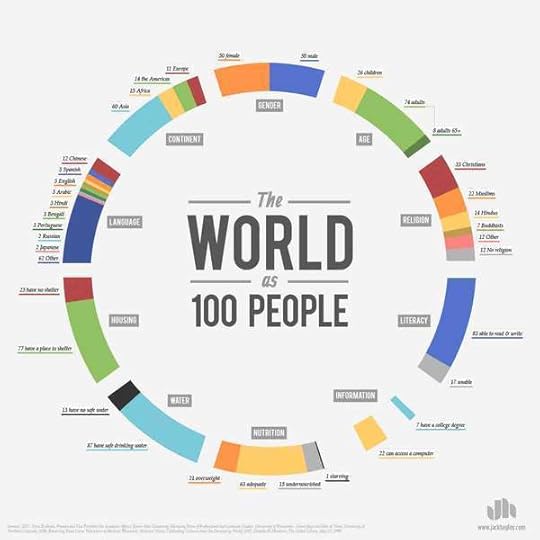 The 100 People Foundation’s website www.100people.org is an amazing and wonderful effort to help us understand who makes up the 7 billion people on the planet at this time and the issues and challenges everyone faces (specifically – water, food, transportation, health, economy, education, energy, shelter, war, and waste). It is one of the most interesting educational and social consciousness raising efforts that I have seen. The group states their mission as follows:
The 100 People Foundation’s website www.100people.org is an amazing and wonderful effort to help us understand who makes up the 7 billion people on the planet at this time and the issues and challenges everyone faces (specifically – water, food, transportation, health, economy, education, energy, shelter, war, and waste). It is one of the most interesting educational and social consciousness raising efforts that I have seen. The group states their mission as follows:
Picture this complex world simply – the world as 100 people.
7 billion of us share this planet.
Who are we?
What do we look like?
What can we learn from others?
Mission
The 100 People Foundation helps students to better understand the complex issues facing our planet and the resources we share.
By framing the global population as 100 people, our media makes education more engaging and effective, and improves students’ abilities to remember and relate to what they learn.
Vision
We are traveling the globe to meet and create portraits of the 100 people representing all 7 billion of us sharing the planet. Our vision is to create documentary films, photography, and educational tools that facilitate face-to-face introductions among the people of the world in ways that cultivate respect, create dialogue, and inspire global citizenship.
Educational Impact
Teachers from schools on every continent have used our media to enrich their lesson plans and engage students in learning about the world population — starting with their neighborhood. Using the 100 People framework, students interview and create portraits of individuals they admire most in their communities. The portraits are then exhibited at their schools and on our website, and inviting students, teachers and community members into a global conversation about their place in the world. Through this process of statistically and visually bridging the local with the global, students develop an equalizing and expansive framework for seeing the people they share the planet’s resources with and for activating their role as global citizens.
Here are their Statistics:
If the World were 100 PEOPLE:
50 would be female
50 would be male
26 would be children
There would be 74 adults,
8 of whom would be 65 and older
There would be:
60 Asians
15 Africans
14 people from the Americas
11 Europeans
33 Christians
22 Muslims
14 Hindus
7 Buddhists
12 people who practice other religions
12 people who would not be aligned with a religion
12 would speak Chinese
5 would speak Spanish
5 would speak English
3 would speak Arabic
3 would speak Hindi
3 would speak Bengali
3 would speak Portuguese
2 would speak Russian
2 would speak Japanese
62 would speak other languages
83 would be able to read and write; 17 would not
7 would have a college degree
22 would own or share a computer
77 people would have a place to shelter them
from the wind and the rain, but 23 would not
1 would be dying of starvation
15 would be undernourished
21 would be overweight
87 would have access to safe drinking water
13 people would have no clean, safe water to drink
Sources: 2012 – Fritz Erickson, Provost and Vice President for Academic Affairs, Ferris State University (Formerly Dean of Professional and Graduate Studies, University of Wisconsin – Green Bay) and John A. Vonk, University of Northern Colorado, 2006; Returning Peace Corps Volunteers of Madison Wisconsin, Unheard Voices: Celebrating Cultures from the Developing World, 1992; Donella H. Meadows, The Global Citizen, May 31, 1990.
Watch a brief video introduction to If the World were 100 People below:
~Jay Kshatri
The post If the World were 100 People appeared first on Think Smarter World.
August 4, 2014
Step Out of Your Container
Don’t let whatever container that surrounds you, shape you. Our life circumstances, where we live, our particular job, the school we go to all have the effect of shaping us in unintended ways. When you put water in a container, a glass for example, it easily conforms to the boundaries of that container. Human beings (who ironically just happen to be made of up to 70% water), often end up experiencing the same thing. We need to fight those artificial restrictions and regain our fluidity and shapelessness. We need to outgrow the boundaries of our childhood and upbringing. Isn’t it interesting how people born and raised in certain geographic areas or who reside within certain socio-economic groups, tend to think alike? Their particular geographical and social container has created their thinking. It’s highly limiting. The challenge in life is to grow beyond the habitual thought patterns we have developed over many years and continuously evolve into the best version of ourselves.
Neuroscientist and physician Dr. Joe Dispenza in his book, Breaking The Habit of Being Yourself: How to Lose Your Mind and Create a New One, shows that the latest neuroscience thinking demonstrates that we are mostly running on autopilot based on these habitual thought patterns:
“Think about that: 5 percent of the mind is conscious, struggling against the 95 percent that is running subconscious automatic programs. We’ve memorized a set of behaviors so well that we have become an automatic, habitual body-mind. In fact, when the body has memorized a thought, action, or feeling to the extent that the body is the mind – when mind and body are one – we are (in a state of) being the memory of ourselves. And if 95 percent of who we are by the age of 35 is a set of involuntary programs, memorized behaviors, and habitual emotional reactions, it follows that 95 percent of our day, we are unconscious. We only appear to be awake. Yikes! So a person may consciously want to be happy, healthy, or free, but the experience of hosting 20 years of suffering and the repeated cycling of those chemicals of pain and pity have subconsciously conditioned the body to be in a habitual state. We live by habit when we’re no longer aware of what we’re thinking, doing, or feeling: we become unconscious. The greatest habit we must break is the habit of being ourselves.”
That’s startling isn’t it – 95% of what we do, act, and feel is based on automatic programs being run out of our subconscious. Now on one hand, that’s clearly bad and limits our ability to grow and change. Is it any wonder that people often fail at self improvement programs and keep coming back for more and more? On the other hand, developing “good” habits that we can perform automatically is an advantage. It allows us to function more effectively, have our brains use less energy resources, and not have to keep re-learning the same things over and over again (think driving a car, playing sports at a certain skill level, etc). So the trick is to de-program ourselves of our bad habits and program in the good ones (the ones where we reach for the raw vegetables and hummus and not the chips and cookies…). How can we achieve this?
The first step is to practice mindfulness and stay in the present moment. When we become skilled at observing our thoughts, actions, and emotions, we enlarge our awareness. We can start seeing the subconscious thought patterns and can determine their origin. The act of noticing and putting our attention on those habitual patterns is a giant first step in changing them. The next step is to replace those patterns or thoughts with something that is more desirable. And, the more often that pattern is repeated (Psychologist Art Markman says 20 times is the right number), the more likely it is to become a new habit which replaces the old one.
Now, anyone who has ever tried to change a habit, knows how hard it is and and how the temptation to do the same thing is sometimes seemingly out of our control. Professor Markman makes a good suggestion for this that I have found to work well. He suggests to prepare in advance with an alternative for the next time a habitual thought pattern or craving will arise. In other words, when you next find yourself with that self-limiting mindset or craving, you will have in your back pocket the alternative thoughts or actions you will take so that you break the habitual cycle. So, taking a very simple example, say you have a sweet tooth, you decide that the next time you get a craving for some dessert at 10pm at night, you will get a glass of water and a some grapes instead. This way, at the time of craving, your mind will not be taxed with coming up with an alternative when you are in a “weakened” state, but instead, already know what it needs to do. Give it a try - I’m confident you’ll find it helpful.
The interesting thing is that apart of from more simple habits such as food and other indulgences, our subconscious automatic pilot applies to everything we do in life. If you’re wondering why in an age of 24/7 access to the world’s collective knowledge and wisdom, we still have an enormous amount of ignorance (even among elite, college educated people), now you know. All of us are reacting to the world around us from a base of built up filters and biases residing within our subconscious brains – the ultimate container. The world needs for us to break free from this restrictive mold and shape a new, more inclusive and positive reality…
~Jay Kshatri
See Dr. Joe Dispenza speak about Breaking the Habit of Being Yourself: http://youtu.be/6lbnrRqBjgE
The post Step Out of Your Container appeared first on Think Smarter World.
August 1, 2014
MeaningfulContent.Org recognizes Think Smarter World!
I was very happy to learn that MeaninfulContent.Org chose to recognize Think Smarter World for its high quality content.
MeaningfulContent.Org explains their mission to recognize and gain wider attention for the web’s best content:
“MeaningfulContent.org is a philanthropic venture from Sharethrough that’s helping storytelling evolve. By putting paid distribution dollars behind the web’s best stories, we hope to shift the focus of the Internet and its users toward content that enriches our lives. This group emerged in response to two primary observations of the state of content online. First, the team recognized a burgeoning movement of storytellers embracing new digital tools to create meaningful narratives. The second is the realization that many of these stories are being drowned out by cat GIFs, “10 Things You Never Knew” listicles and various other forms of clickbait. The goal of MeaningfulContent.org is to find the best, underappreciated digital storytelling and help it rise above the clutter.”
The group’s advisory board, which helps curate the three to five pieces of content promoted each week, comprises Medium senior editor and former Wired.com editor-in-chief Evan Hansen, Quartz president and publisher Jay Lauf, Chartbeat CEO Tony Haile, Twitter head of innovation and growth James Buckhouse, Sharethrough CEO Dan Greenberg, and Sharethrough president Patrick Keane.
They explain in Fast Company magazine, how they define “Meaningful Content”:
THE MEANING OF “MEANING”
It took a lot of back and forth, but the board arrived at the following criteria for meaningful content: Connection with the subject matter; Original thought; Advancing an idea; and Depth of engagement. Though not a rigid criteria, it’s a bonus to showcase gems that never got their due on the web–content that Greenberg describes as “so incredibly awesome that if it doesn’t go viral viral, we’re deeming it underappreciated.”
The Think Smarter World post they chose is – “Meet the Technology that Wants Your Job.” – click on the link to view it on their site: http://meaningfulcontent.org/1067

Photo Courtesy of CompFight
You can also view additional background on the group’s mission by looking at a couple of articles on their work:
The first is The Birth of MeaninfulContent.Org written by the founders on the site Medium: https://medium.com/@sharethrough/the-birth-of-meaningfulcontent-org-1b890b7b823c
The second is an article on the organization that appeared in Fast Company Magazine: http://www.fastcompany.com/3033274/most-creative-people/the-million-dollar-play-to-make-the-internet-more-meaningful
~Jay Kshatri
The post MeaningfulContent.Org recognizes Think Smarter World! appeared first on Think Smarter World.
July 18, 2014
It’s None of My Business…
Deepak Chopra said that recently in an interview with Oprah Winfrey regarding how he feels of what others think of him and it has become one of my favorite things to recite during times of stress or irritation caused by someone else. It was a brilliant one-liner which goes to the heart of understanding the place of the Ego in our life and the lives of others. At the core of Deepak Chopra’s statement is the realization that what other people do and say is really about them – their own mental and emotional state, level of consciousness, and overall phase of evolution. We can either speak from the heart or from the Ego and when people are being aggressive, un-kind, critical, or un-caring, they are usually communicating through their Ego. The Ego is the small voice in your head that operates from a place of fear, anxiety, anger, self-preservation, and a host of other non-loving elements that make up the human psyche. It’s not who we truly are, the underlying well-meaning soul. It is a mask we create and wear that conveys our personality in less than authentic ways.
Eckhart Tolle explains the roots of the Ego in this way: “Most people are so completey identified with the voice in the head – the incessant stream of involuntary and compulsive thinking and the emotions that accompany it – that we may describe them as being possessed by their mind. As long as you are completely unaware of this, you take the thinker to be who you are. This is the egoic mind. We call it egoic because it is a sense of self, of I (ego), in every thought – every memory, every interpretation, opinion, viewpoint, reaction, and emotion. This is the unconsciousness, spiritually speaking. Your thinking, the content of your mind, is of course conditioned by the past: your upbringing, culture, family background, and so on. The central core of all your mind activity consists of certain repetitive and persistent thoughts, emotions, and reactive patterns you identify with most strongly. This entity is the Ego itself.”
So, someone’s reaction to you or more correctly, their perception of you or what you have done or said, is not simply a case of stimulus and response (though we should certainly pay close attention to sincere feedback and criticism). It comes with a truck load of baggage. Baggage that is truly unique to that individual and clearly, None of Your Business… Through this practice, we learn acceptance, non-attachment, and forgiveness. We learn to not react egoically ourselves to people and situations - to not take things personally. By doing this, we come closer to achieving the best version of our true self.
-Jay Kshatri
The post It’s None of My Business… appeared first on Think Smarter World.



